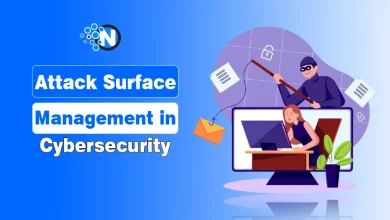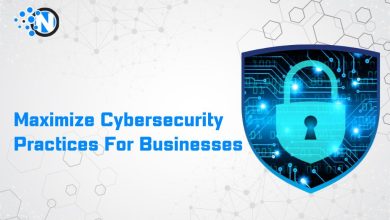Maintaining a secure server is vital as it plays a huge role in maintaining data privacy and ensuring the integrity of sensitive operations. Furthermore, it prevents the attempts of unauthorized access to guarantee the maximum protection. Implementing these tactics can help you have solid protection against cyber threats. While several tactics are in demand, you must learn the essential ones for better outcomes. This guide will detail the top 10 practices for maintaining a secure server. I have implemented all of them and enlisted them as per their effectiveness.
Secure Server – An Overview
Start creating Verdict in seconds, and convert more of your visitors into leads.
Secure servers are specialized computer systems that are primarily designed to deliver protection against data breaches and in the financial landscape to safeguard online transactions. They use the potential of the world’s popular encryption protocols including the likes of SSL/TLS. In this way, they can guarantee safe data transmission. Other security features include firewall protection and regular updates to enhance protection against cyberattacks and unauthorized access. If you are on your way to launching an online business or already have one, you must understand the top security tactics to make your servers more secure.
Top Practices for Maintaining a Secure Server
Start creating Verdict in seconds, and convert more of your visitors into leads.
As mentioned previously, I have researched hard and implemented a great deal of tactics available on the web. Nevertheless, not all of them are functional. Therefore, I have picked the top 10 practices for maintaining a secure server. You must pay attention to them.

Encryption
Encryption is the procedure of encoding the information and converting the original version of the information, called plaintext, into some other forms which are known as ciphertext. In this way, you can avoid the access of other users who are not authorized. In an ideal case, the users who know how to convert ciphertext into plaintext again can access the original information.
Use SSH Keys Authentication
Secondly, you must implement SSH key-based authentication protection to maintain a secure server. This tactic involves the generation of a key pair which is a combination of public and private keys. The public key is stored in the server while the client can use the private key for authentication purposes.
Secure File Transfer Protocol
The next tactic to maintain the secure server is by preferring the SFTP over the FTP for file transfer purposes. SFTP stands for Secure File Transfer Protocol. It encrypts the data while transferring it from one drive to another. Hence, the risk of malicious attacks will be reduced to a greater extent.
Secure Sockets Layer Certificates
SSL certificates, short for Secure Socket Layer Certificates can help you enable secure communication over HTTPS. Also, it ensures data integrity and authenticity, especially when it is involved in processes like handling sensitive information or payment details. SSL can secure your login credentials to prevent unauthorized access.
Use Private Networks and VPNs
Although there is a huge debate over the Internet regarding the benefits of public and private networks, you must leverage the potential of private networks as it restricts access only to known users. Additionally, VPNs can encrypt the traffic and enhance the security for remote connections to maintain the privacy of a secure server.
Monitor Login Attempts
Failed login attempts are the primary concerns for online business managers. That’s why it’s crucial to set up login monitoring tools to track the amount of failed login attempts. Several applications and software are available on the web that will automatically block IP addresses after multiple failures. Ultimately, it prevents the force attacks.
Manage Users
Next, you must practice reviewing the users you have added to your account to manage the security of the server. Reviewing the users’ accounts regularly and managing them will protect you from disaster. Also, you should remove inactive profiles as they can be the hub for malicious activities.
Strong Password Policies
No matter how much other tactics play their role in maintaining a secure server, nothing is more important than strong passwords. You must encourage users to design sturdy passwords by mixing then capital and small letters will numbers and symbols. Furthermore, updating them regularly will prevent unwanted consequences.
Regular Backup
Regular data backups also have their role in maintaining server security as they enable you to restore your progress in case of a breach. A useful tactic is storing the backups securely in off-site or in a separate location so that no one can access them. However, you must have comfortable access to the drive to ensure data recovery.
Firewall Protection
Lastly, firewall protection is another useful cybersecurity option to maintain a secure server. You must configure and maintain a firewall to ensure that it can filter the incoming and outgoing network traffic. In addition, it serves as a barrier against unauthorized access and protects your server.
The Verdicts
Start creating Verdict in seconds, and convert more of your visitors into leads.
These are the tips that you need to follow when it comes to maintaining a secure server. It is necessary to remember that it is not a single-time procedure as you have to be active and consistent in eradicating different issues and AI threat detection. While numerous security measures can prove effective, you must go with two-factor authentication and implement a strong password policy. Furthermore, monitoring unauthorized access and taking the right steps to overcome such challenges can help have a brilliant experience over the web.
FAQs
Start creating Verdict in seconds, and convert more of your visitors into leads.
How do you maintain a secure server?
Different techniques like 2FA authentication, strong password policies, firewall protection, and others allow you to maintain a secure server.
What are the security best practices?
Strong passwords and regular software updates are the best security practices that will help you maintain your privacy.
How to enhance server security?
Installing the firewall protection on the server will help you enhance its security.
How to host a server safely?
You can host a server safely by preferring SFTP over FTP and using SSL connections to overcome cyber threats.




